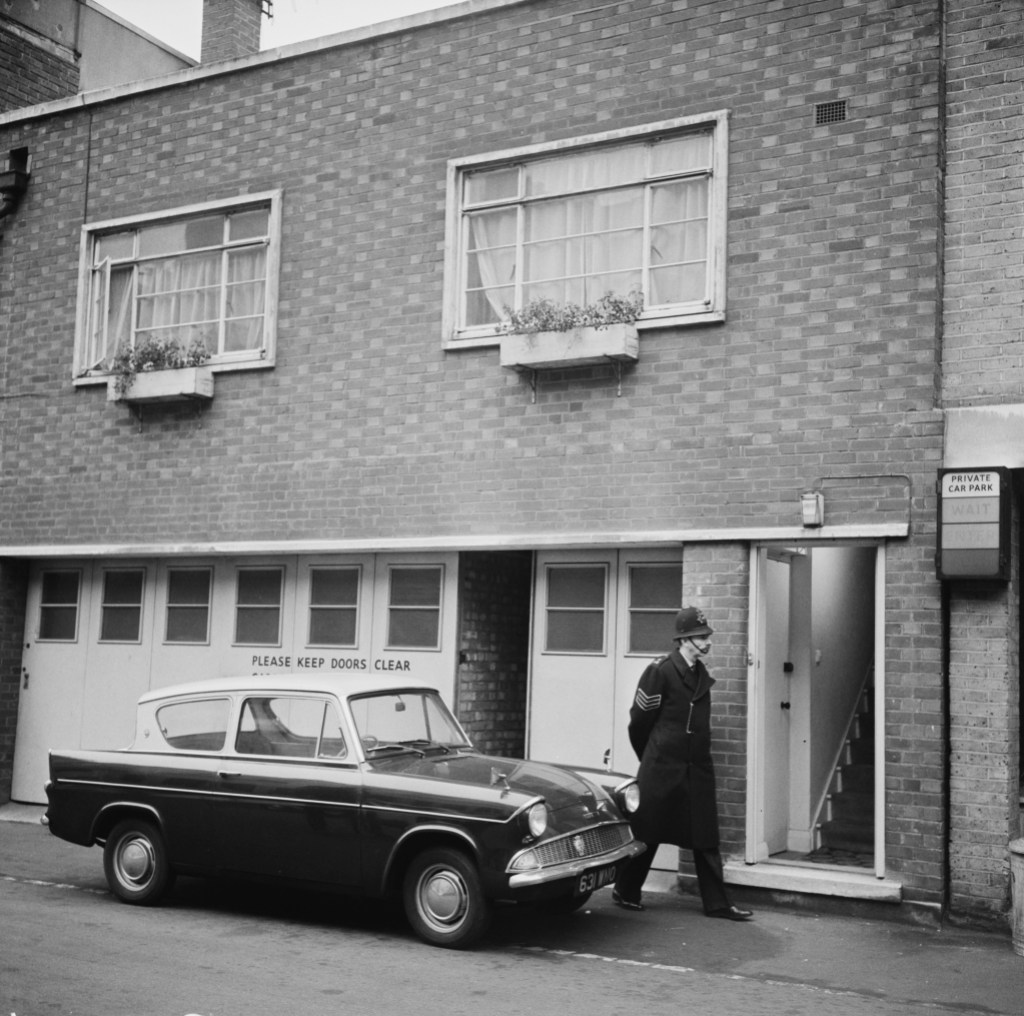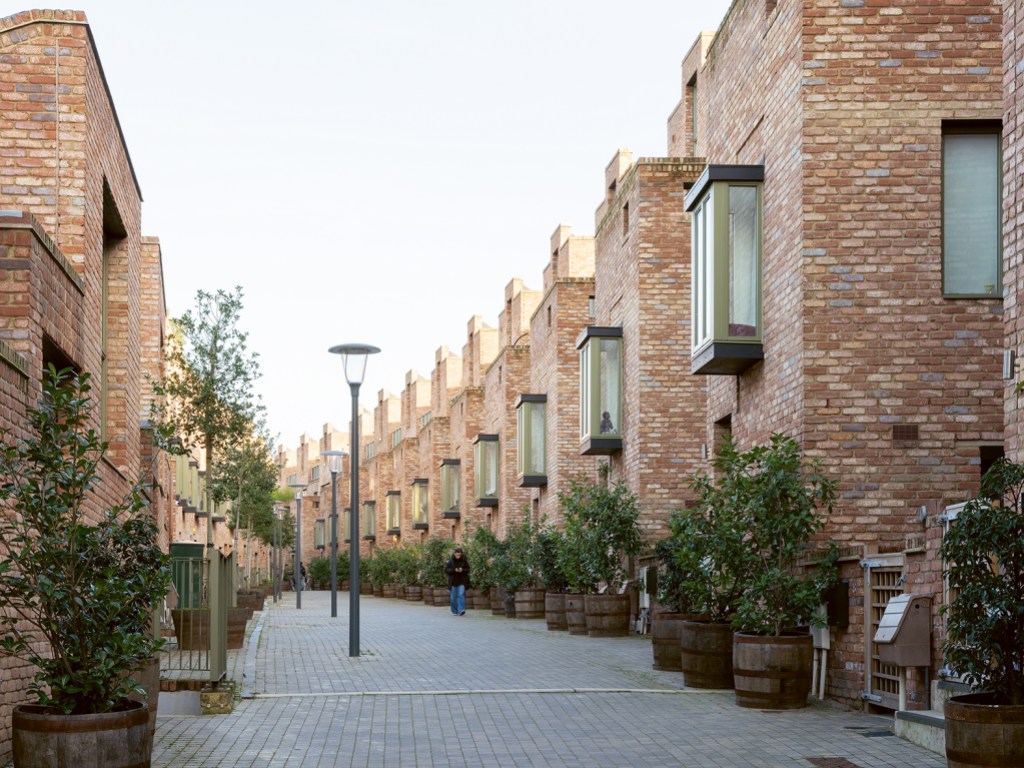From the October 2025 issue of Apollo. Preview and subscribe here.
Georgian cities were mostly about appearances. Fashionable London townhouses in areas presided over by enormous estates presented a scene of unhurried wealth and high style, but were largely theatrical set pieces for frequently absent residents and owners. From the early 18th century onwards, ‘back of house’ to the handsome squares that dominated the smart urban scene was a narrow lane lined by brick cottages, used for carriages and horses, with basic accommodation for staff. Within a century, many of those lofty houses in front had fallen on hard times while the regions behind them had tended to degenerate too.
While those five-storey houses in areas such as Bloomsbury or Bayswater did not long live up to their promise, by the mid 20th century some of those neat little ‘back of house’ cottages, with space beneath, had much more potential. Front and back were reversing roles: if a tall townhouse no longer suited lives or pockets, attractive houses of modest dimensions became highly desirable and, for a moment, even affordable.
The term ‘mews’ – from the French muer, ‘to moult’ – originates in the King’s Mews, which was established in the late 14th century at Charing Cross (on the site currently occupied by the National Gallery); it was here that the royal hawks used for hunting were kept while they shed their plumage. When the building was destroyed by fire in 1534, it was rebuilt as stables, but retained the name ‘Mews’ – hence the equestrian association with the term thereafter.
The inconspicuous pattern of mews houses slotted in along the rear of many a hefty terrace has been a gift to the wider fabric of London. They have proven readily adaptable to the changing habits, manners and demographics of the city. In the early 20th century, the motor car was stabled where once the horse had been. The mews offered private off-street garaging but soon, too, the invaluable local asset of motor mechanic businesses. The capital’s first petrol pump was installed in Queen’s Gate Mews in 1913. Much as central London railway arches and substructure encouraged a revival in small-scale affordable workshops, so surplus mews space became a lifeline for trades in a mixed economy.
As time passed, and car ownership in the city fell, those garages and their upstairs quarters were gradually cannibalised, sometimes for studio-offices, sometimes for further accommodation. As before, the value of the mews lay in its adaptability and seemliness. Architectural students in the 1960s and ’70s would learn that Le Corbusier’s 1920s workers’ housing project in Pessac, Bordeaux, had been modified and personalised in cheerful flouting of its ostensible modernism; similarly London mews houses, initially so functional, have taken on the tone and characteristics of their neighbourhood. Around Harley Street and Wimpole Street the tendency has been to deny those modest, functional origins, whether with bijoux colour schemes or the folie de grandeur of over-scaled neo-Georgian doorcases or chunky sash windows – escapees from the filmic worlds of Jane Austen or Miss Marple.
Grosvenor Square introduced London to the mews in around 1720, though almost a century earlier Inigo Jones’s Italianate plaza at Covent Garden (for the Bedford estate) included an embryonic version. Grosvenor Square offered a complete grid of rear-access lanes, usefully housing carts, carriages and horses and those who serviced them. As Mark Girouard noted, the mews were the external equivalent of the backstairs that had crept into the domestic plan of the large houses in front. The existence of such shadowy regions, indoors or out – designed for the use of menials and for the removal of ordure – encouraged the notion of a domestic zone set apart for the unsightly and the unsavoury.

In the mid 20th century, the picturesque mews was frequently spiced with scandalous and newsworthy goings-on. The innocent-looking cottages of Wimpole Mews and Bryanston Mews West provided unlikely settings for the Profumo affair in the early 1960s – the former was the home of society osteopath Stephen Ward, and the location for the assignations of the government minister John Profumo with the showgirl Christine Keeler. Central London mews have never quite escaped the colourful associations with sleaze and scandal. Just a few years later, Michelangelo Antonioni roughed up a Notting Hill mews called Pottery Lane, reallocating it to Charlton, far away across the Thames, and made it the setting for the disturbing key scene in his film Blow-Up (1966).
It would have been hard in the 1960s to imagine an estate agent specialising solely in mews properties for sale or rent. Sharp-eyed architects, however, were alive to the possibilities offered by gap-toothed mews. Semi-industrialised areas such as north Camden offered sites which were, essentially, free from onerous planning requirements. In these spots, brave new architecture flourished. The adventurous individuals responsible tended to be young self-builders and their houses could be, and often were, calling cards for an entire architectural practice.

Some of these houses are included in At Home in London: The Mews House, a new book surveying 16 projects from the 1960s to the present day. The work of John Winter (1960s) and David Wild (1980s) pointed in one direction, reliant on modernist forms and materials, while that of Ted Cullinan, another. The Japanese-style cottage built in 1965 by Cullinan and his wife at 62 Camden Mews, described here as ‘gypsy caravan-like’, was self-evidently expressive. The book’s author, Ellis Woodman, notes that new-build mews houses ‘enjoyed an expressive licence that Britain’s conservative planning culture rarely extended to new homes on more conspicuous sites’. London’s back lanes incubated much of the best new domestic architecture in the city and still do, under the radar. The mews house (or site) is an opportunity, suggesting a housing type for everyone, almost anywhere. Look at Edgewood Mews in Finchley, north London, by Peter Barber Architects. Completed in 2022, the front of this mixed-tenure housing scheme faces a main road – so, properly enough, it is the rear that plays with the idea of a mews, happily offering both privacy and access. The wheel that started turning behind Grosvenor Square has turned full circle.
From the October 2025 issue of Apollo. Preview and subscribe here.
